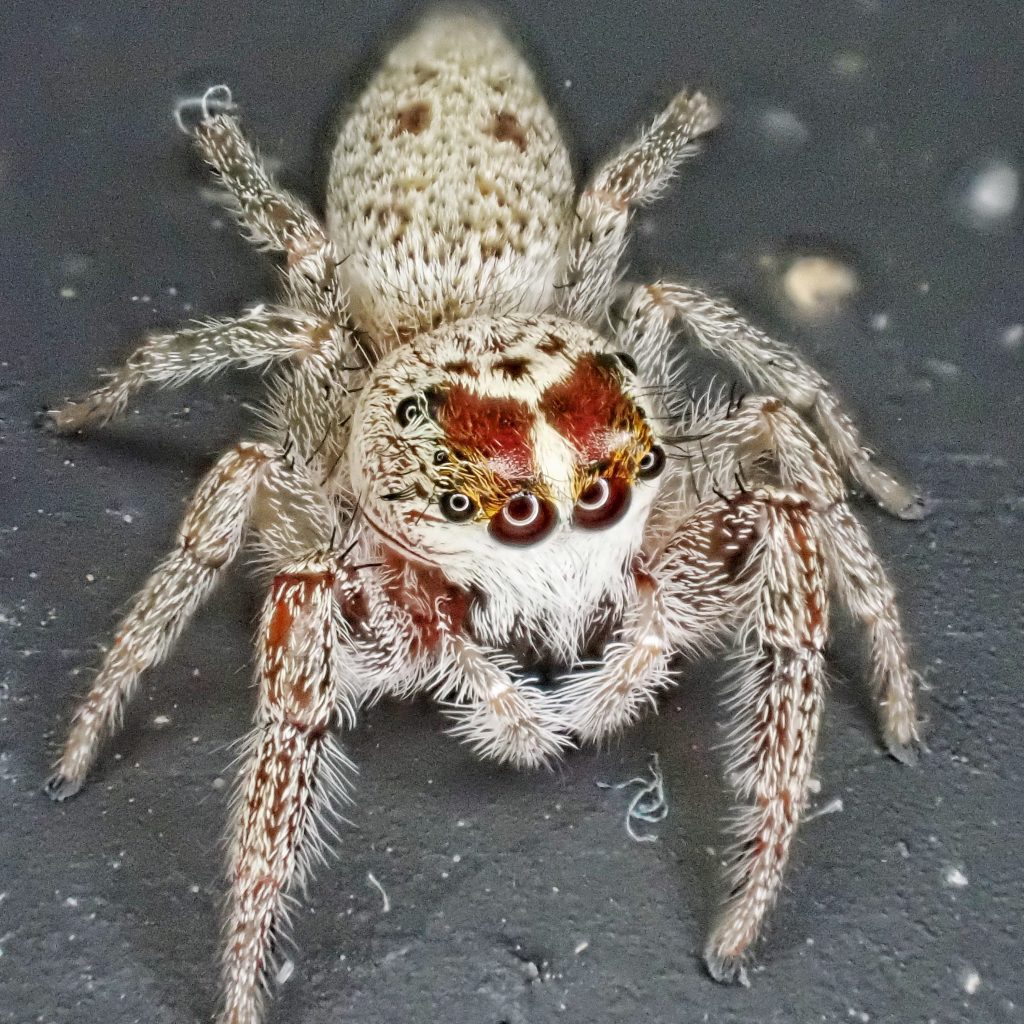
This is the jumping spider (family Salticidae) that I mentioned in the blog ‘In Search of Spiders ‘. Late that night, after photographing my chilled out specimens, I jumped to the conclusion that this was Phanias albeolus (and even sent a photo to Rod Crawford for confirmation), because the only reference book that I have that mentions Phanias said that P. albeolus was the only Phanias in Washington, though it was their illustration of a Phanias harfordi female (the only female Phanias shown) that made me think I was in the right genus. The next morning, with a clearer head, I thought to consult Rod Crawford’s “An Annotated Checklist of the Spiders of Washington [1988]”, where I found three specific epithets that I recognized from reading about Phanias, but in 1988 they were placed in Metaphiddipus, although Crawford alludes to what was then the upcoming revision by Maddison that placed them in Phanias. And of the three, P. harfordi was the best fit, which Rod Crawford confirmed after I sent him a second email with a better guess and diagnostic photos.
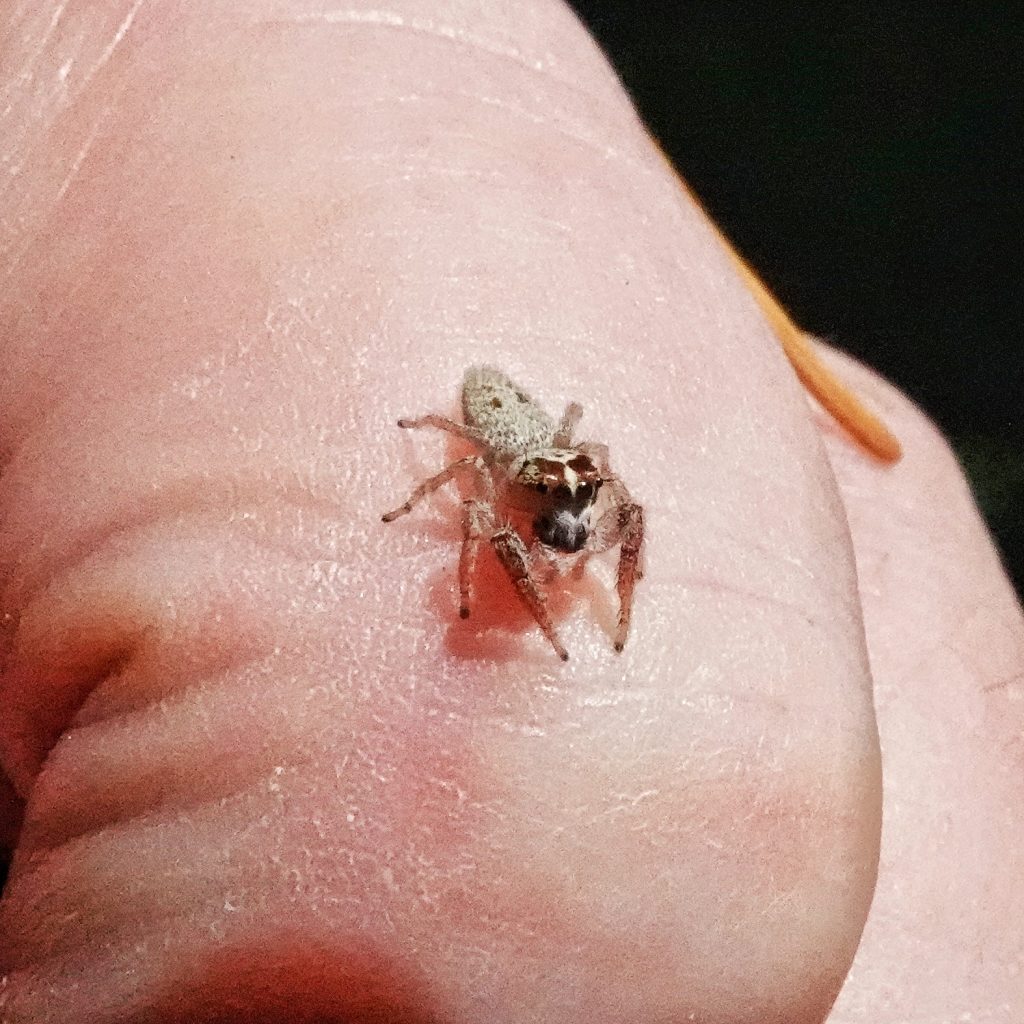
Salticid spiders seem to have a level ‘personality’ that other spiders lack, which mostly has to do with the way their large median eyes track one’s movements, and the way that they will hop right onto an outstretched finger or palm. They have a curiosity about them that is quite endearing for an arachnid. Unlike most spiders that find prey by vibrations, jumping spiders are visual hunters, and some of them even have the memory/intelligence to move into a better attack position when hunting, even when it means losing sight of the prey. I’ll admit to a tendency to anthropomorphize them, and though I never take it lightly when I kill an arthropod for identification, it’s always even harder to euthanize a jumping spider.
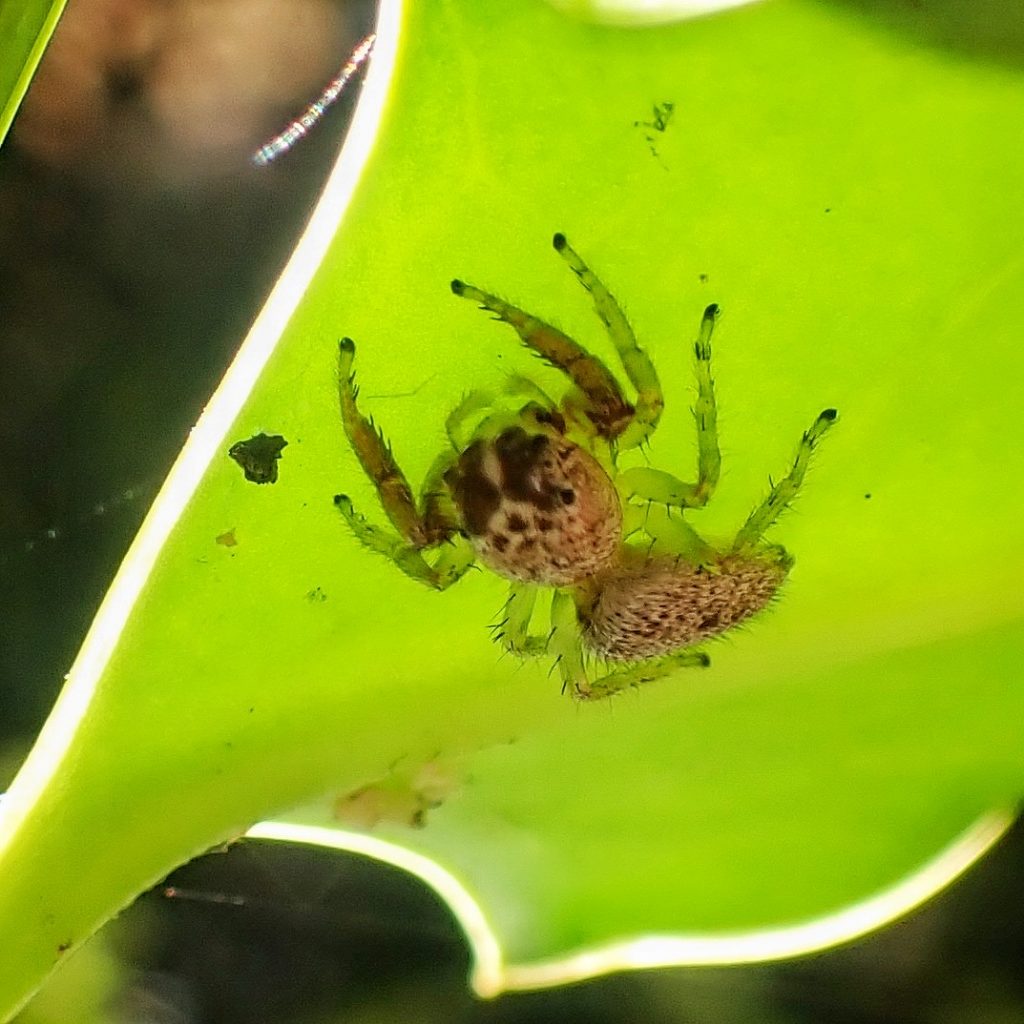
I was really excited to profile this cool little jumping spider, until I realized that very little seems to be known about the nuts and bolts of their lives. Most of what I could find either refers to Phanias spp. in general, or to salticids as a whole. Re; Phanias– “Courtship with first legs raised, forward, and parallel (Fig. 118) and waved asymmetrically so that the leading leg on sidles is waved exclusively or more strongly.” v.154 (1994-1996) – Bulletin of the Museum of Comparative Zoology at Harvard College – Biodiversity Heritage Library . Phanias are foliage dwellers, and are found on the leaves and needles of various trees, shrubs, and plants. But overall I was shocked and frustrated by the dearth of information on these spiders. That is why there are only 2 references below. Those are the only places I found useful information. And they didn’t have much!
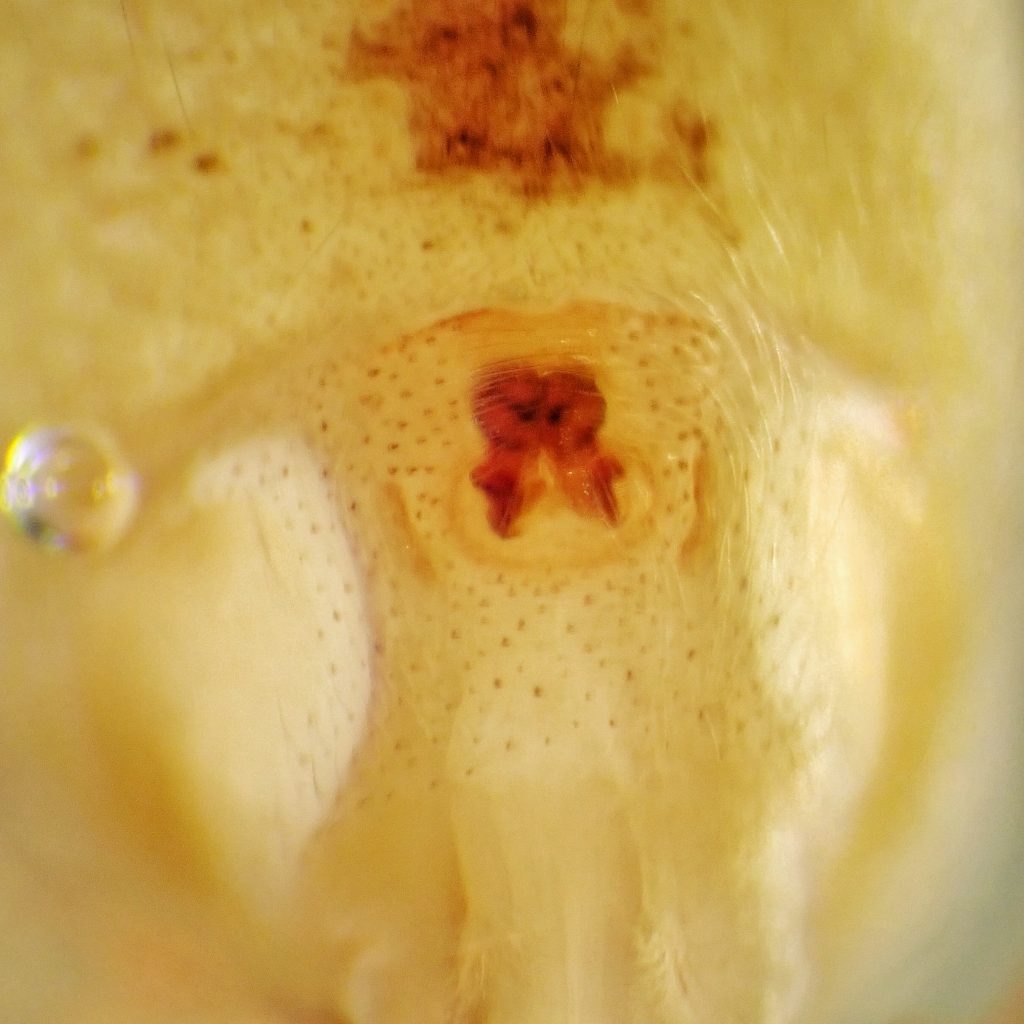
Description– Small (5-7mm) jumping spider; females are brownish grey with two slightly darker spots and a light border on the abdomen, and a pair of red blotches at the front of the carapace; males are dark reddish brown with a white border to both the abdomen and carapace.
Similar species-female P. albeolus have darker carapace with light blotches, female P. watonus have chevrons on abdomen, dark at rear of carapace; male Phanias appear to require examination of palpal genitalia to be differentiated.

Habitat– It looks like they are found in brushy areas, probably also in open forest and forest edges, but I can find no statements about habitat for this species.
Range– From looking at iNaturalist observations it appears to be found in far western North America, and in the PNW they seem to only be found west of the Cascades. Observations · iNaturalist
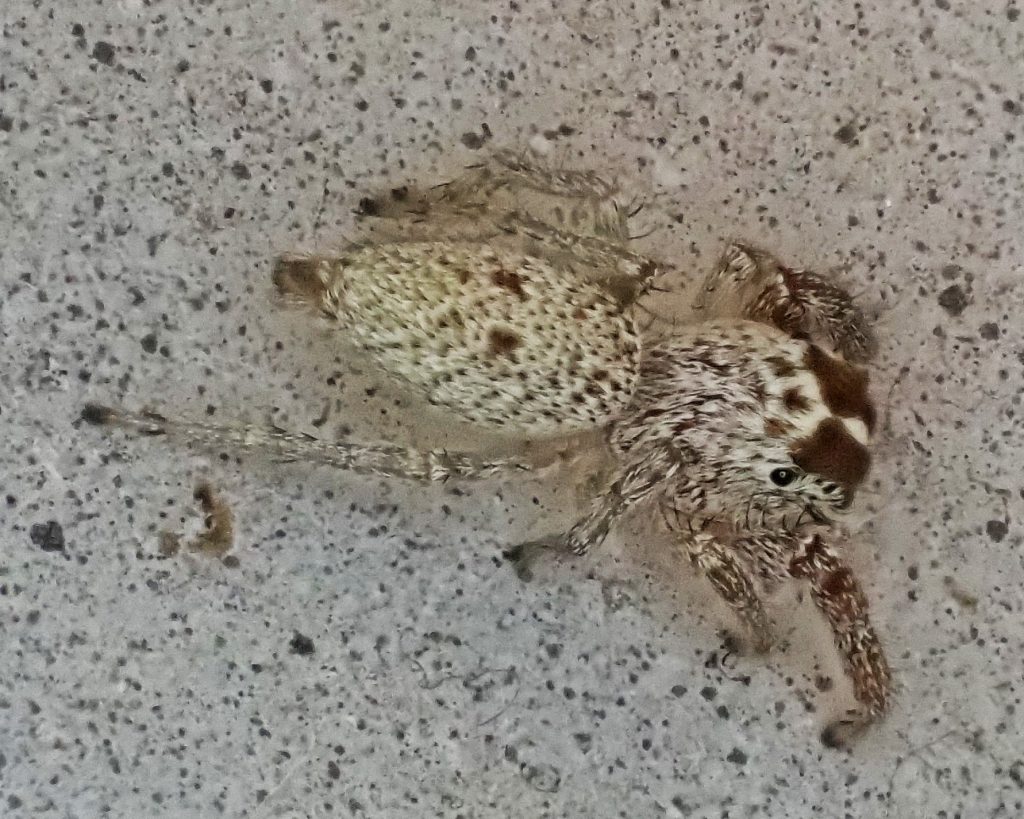
Eats– Presumably small insects like flies and midges, and small caterpillars, but I can find nothing specific to this species.
Eaten by– Presumably anything that eats spiders and can catch and subdue them, probably mostly birds and larger spiders.
Adults active– From BugGuide and iNaturalist records they seem to be found from mid spring into early winter.
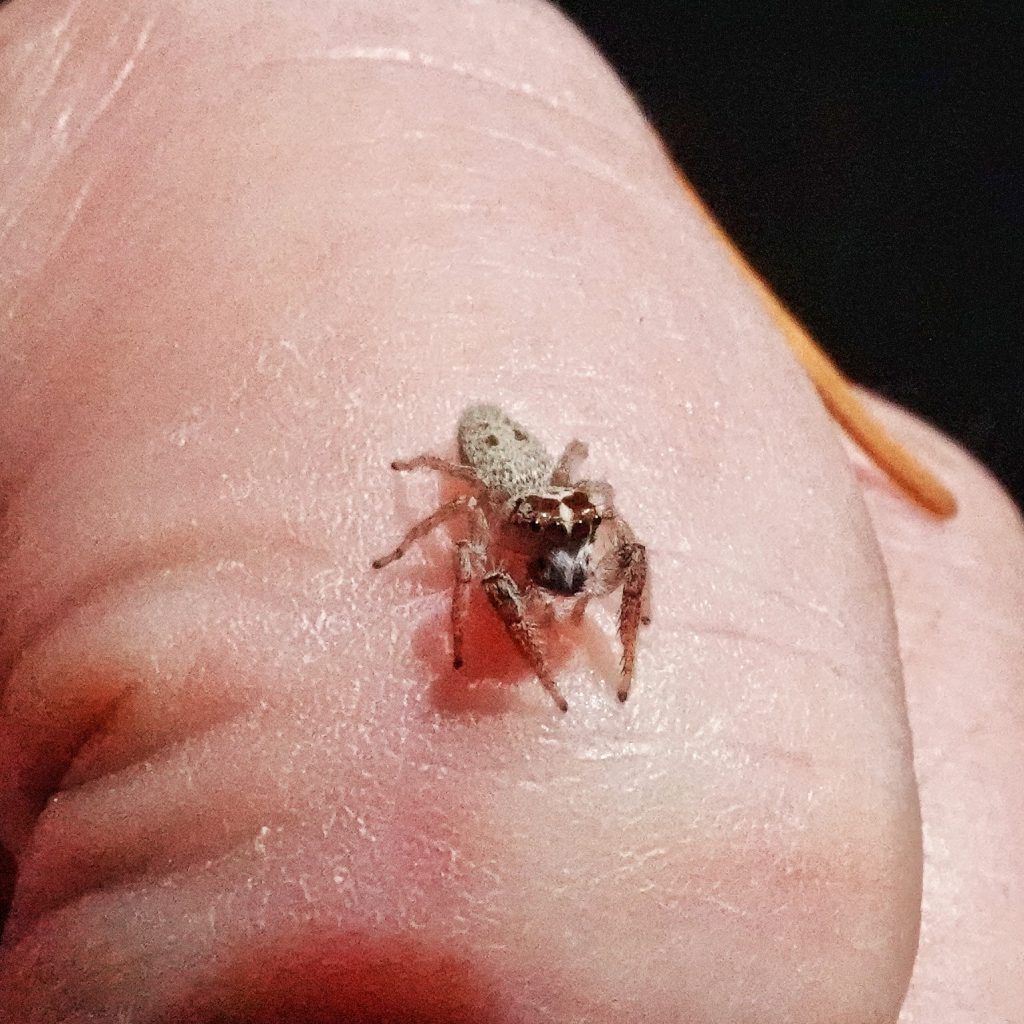
Life cycle– I can find nothing specific for this species, or even this genus, but salticids in general tend to place the eggs in a cocoon, and build a silk cave around it where they stay and guard the eggs.
Etymology of names– Phanias is probably from the name of an ancient Greek poet, but it was a fairly common masculine name in Ancient Greece, and Pickard-Cambridge doesn’t bother explaining himself. The specific epithet harfordi may honor someone since it doesn’t appear to have any Latin or Greek roots, and a likely candidate would be Mr. W. G. Harford, who Peckham & Peckham mention as having contributed specimens to their original description. Thanks to Rod Crawford for sleuthing that out!
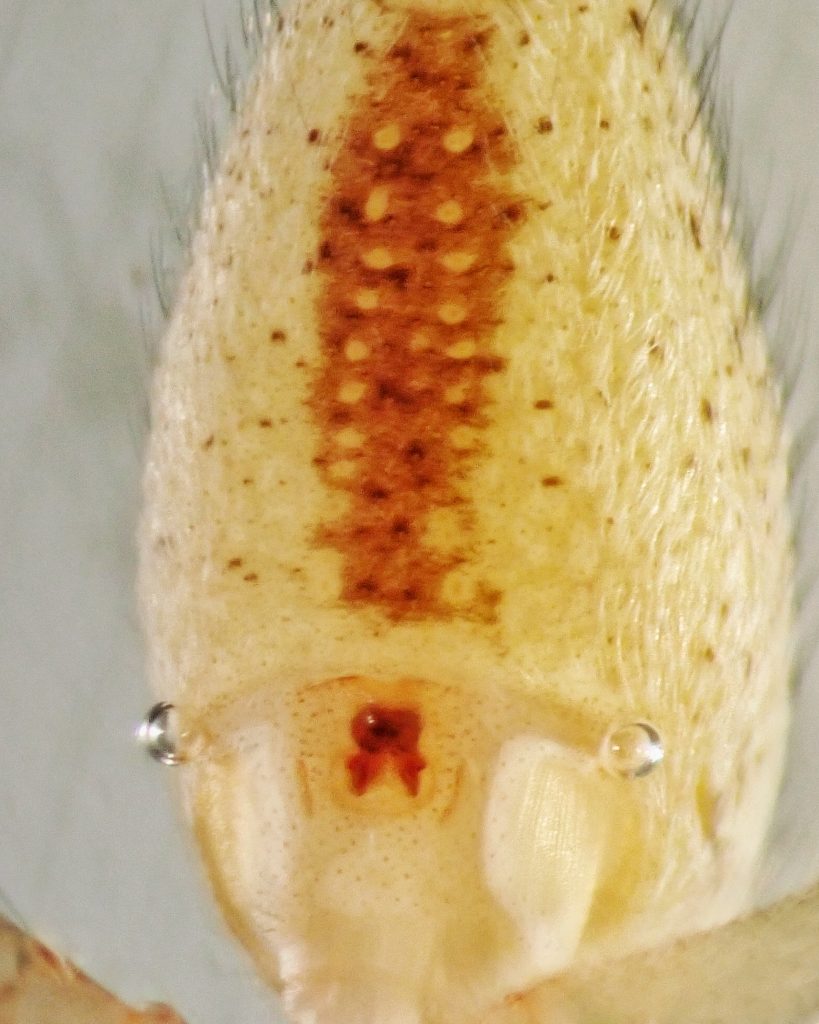
Species Phanias harfordi – BugGuide.Net
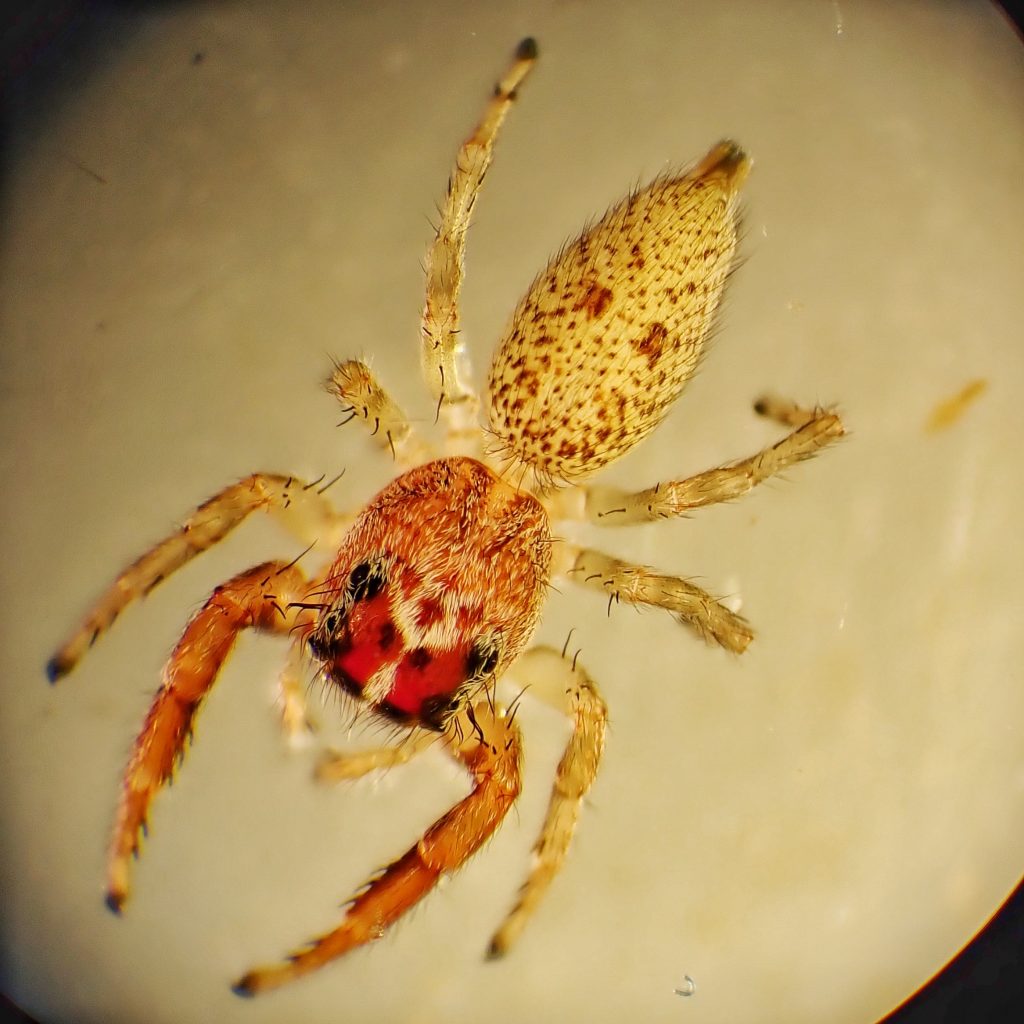
Very few spiders are likable, but I think the jumping spiders are cute. That’s probably because they have a “face” and are very alert.
And they are fun to watch in a way that most spiders are not, Robert!
I love the way they will look you in the eye and turn towards you if you move. Kind of similar to a praying mantis. Have only seen the black ones here in Washougal.
Yep, Jerry, the salticids are very cool!
I have a bunch of these guys living in a bush in my backyard and I was trying to figure out what they were – when I realized they were phanius harfordi I was disappointed to see that there was very little information about them! Hopefully I can learn a bit more my observing my little community of them 🙂
Almost anything you learned would be something new, Esse!
I have one of these sweeties! Back in October I rescued her from my car, where I found her missing a front leg and trying to survive. Getting an ID on her was way more challenging than I expected, and even more so has been finding any info on her species! I found her as an adult so I have no idea how old she actually is. She’s never molted for me. I love watching her hunt when I feed her. She’s like a little cat, she’ll catch a fly and then wander around with it in her mouth till she decides where she wants to post up and chow down. I wish I could find more info about her species, I’m very grateful for this article as it’s the most I’ve been able to find so far!
Thanks for your appreciation, Olivia!